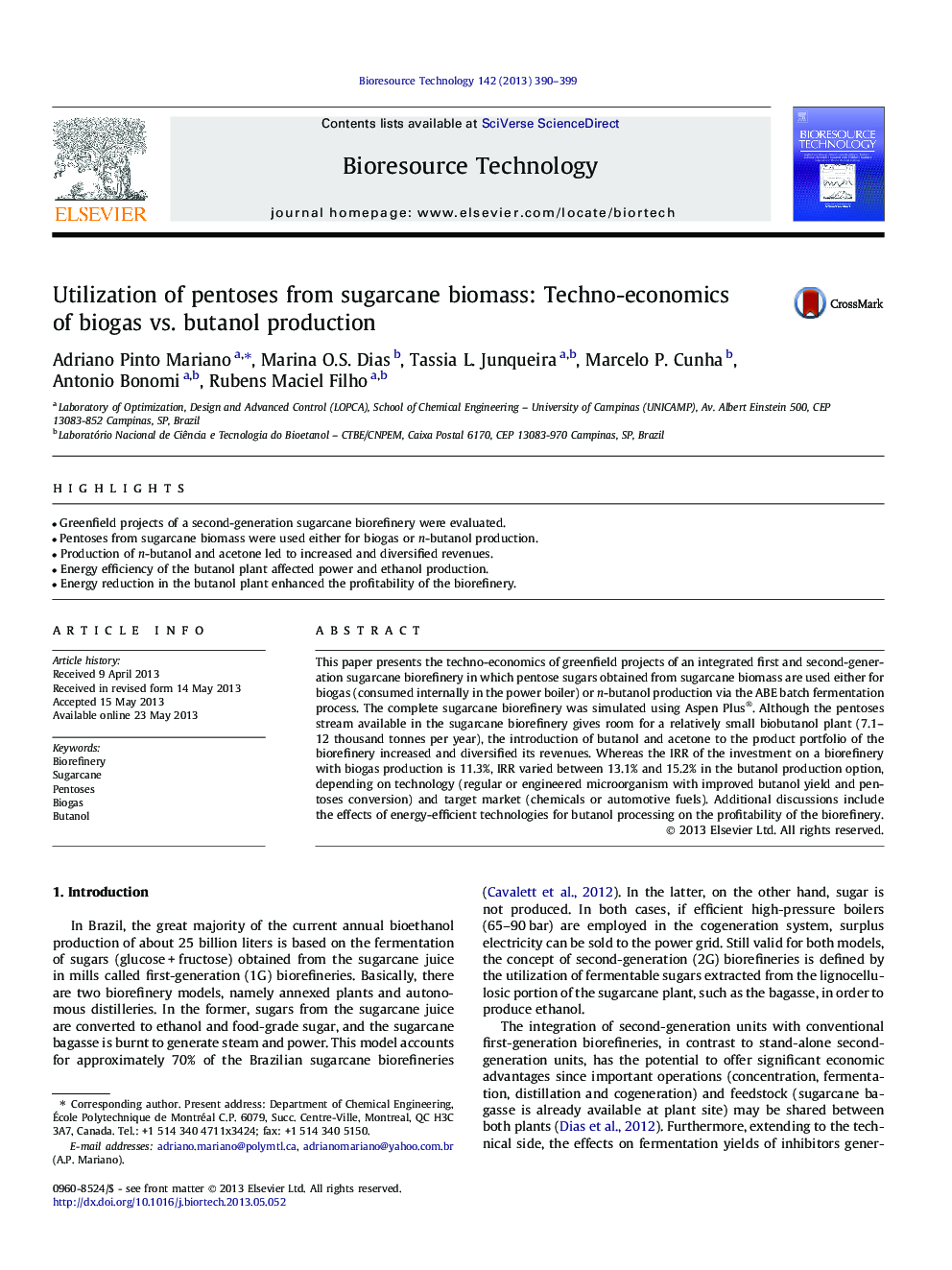| Article ID | Journal | Published Year | Pages | File Type |
|---|---|---|---|---|
| 7082014 | Bioresource Technology | 2013 | 10 Pages |
Abstract
This paper presents the techno-economics of greenfield projects of an integrated first and second-generation sugarcane biorefinery in which pentose sugars obtained from sugarcane biomass are used either for biogas (consumed internally in the power boiler) or n-butanol production via the ABE batch fermentation process. The complete sugarcane biorefinery was simulated using Aspen Plus®. Although the pentoses stream available in the sugarcane biorefinery gives room for a relatively small biobutanol plant (7.1-12 thousand tonnes per year), the introduction of butanol and acetone to the product portfolio of the biorefinery increased and diversified its revenues. Whereas the IRR of the investment on a biorefinery with biogas production is 11.3%, IRR varied between 13.1% and 15.2% in the butanol production option, depending on technology (regular or engineered microorganism with improved butanol yield and pentoses conversion) and target market (chemicals or automotive fuels). Additional discussions include the effects of energy-efficient technologies for butanol processing on the profitability of the biorefinery.
Related Topics
Physical Sciences and Engineering
Chemical Engineering
Process Chemistry and Technology
Authors
Adriano Pinto Mariano, Marina O.S. Dias, Tassia L. Junqueira, Marcelo P. Cunha, Antonio Bonomi, Rubens Maciel Filho,
